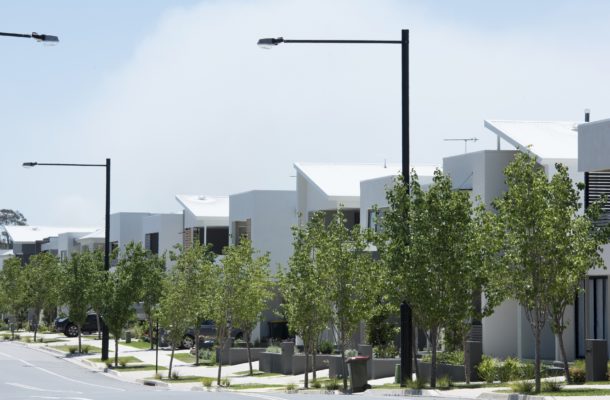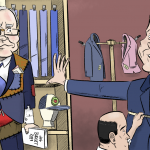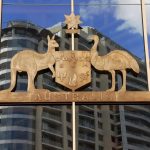What you didn’t know about housing affordability and the upcoming NSW State Budget

The Berejiklian Government’s first State Budget will be delivered on 20 June 2017. Robert Snell says housing affordability needs to be both a State and national economic priority.
Many young Australians and their parents have been left disappointed by the latest Federal Budget with few real measures to address housing affordability. International measures of home affordability suggest that anything above 3 times average annual earnings becomes unaffordable and Sydney is currently travelling at around 12 times and at record highs1.
We all should be alarmed and angered by this. The government needs to recognise that rising home prices are not a sign of success and being to house your population is.
What you may not know is that there are six key things the New South Wales State Government can do to make homes more affordable in the State Budget that will be handed down on 20 June. We’re lobbying on behalf of all first home buyers and their parents in NSW to take action.
Let’s take a look:
-
Allow the building of the right type of housing in the right places
Today, over 24% of households comprise one person2. We need to build more dwellings appropriate for changing demographics. We should also review existing attitudes to apartment and home sizes. Well-planned micro apartments and micro houses are a feature of many international cities. These are typically much more affordable and allow a stepping stone for first home buyers to enter the market.
In a city like Sydney, the 5 to 20 km radius from the CBD is where the development really needs to take place. This is nearer the higher paying jobs with access to infrastructure.
-
Create first home buyers zoning
In each new development there should be a percentage of dwellings which are specifically zoned for first home buyers only. This means that young people are not competing with investors to buy their first property. The zoning is permanent, which means that when the time comes for the owner to sell and move, the property can only be sold to another first home buyer. In this way we gradually build up a stock of homes in the city which can only be bought by first home buyers.
-
Remove stamp duty for first homebuyers (and perhaps everyone if we’re brave)
In our financial planning practice we see that the greatest problem for first home buyers is getting enough money together for a deposit. Because they cannot usually afford a brand new dwelling, they also need to save the money to pay large stamp duties. In New South Wales stamp duty on a $700,000 dwelling is $26,990.
Removing stamp duties for everybody and replacing them with a broadly based land tax is especially beneficial to first home buyers as it means that they don’t have to save that additional amount to enter the property market. If that proposal is too challenging, then let’s remove stamp duty for first homebuyers up to the median Sydney house price which currently is $1,151,5653 as an interim step.
In many instances a first home buyer will appear to be an investor. In an attempt to gain a foothold in the property market they may buy their first property and then immediately rent the property out. Often they continue to live with mum and dad until they have reduced their mortgage to a more manageable level. The removal of stamp duty should also apply to first homebuyer investors.
-
Reduce the cost of the approval process
Planning and building plans need to be more efficient. We need to streamline the process of approvals in a way that cuts both the cost and red tape. These costs end up getting passed on to the end consumer and increase the cost of housing for everyone, including first home buyers who can least afford it.
-
We need housing affordability goals
In 1981 according to Census figures, 61% of 20 to 34-year-olds had bought a property4. By 2011 that figure had dropped to 43.2%5. It is forecast to drop further to 23.7% by 20196.
So we’re calling for the State Government to set a housing affordability target. We’re clearly seeing a trend of falling home ownership by young Australians. You can only ever achieve a goal by setting a target and if past performance is anything to go by, by 2050 we might have less than 10% of young Australians buying a home.
Setting a series of targets creates a continual focus on dealing with the problems of unaffordable home prices. Serious economic modelling will also be needed so we can measure our progress and adapt our policies accordingly. This approach also allows us to plan better for those renters who will never be able to afford to buy a property.
-
We need housing affordability to be both a State and national economic priority
We call for housing affordability to become both a State and a national economic priority. If that cannot be done in a bipartisan way, then we need to set up a non-political planning organisation to be charged with the task of making housing more affordable. We need to take the political heat out of this issue so that we can deal with the problem.
We propose we create a National Housing Affordability Planning Organisation (NHAPO). NHAPO would have access to high-level economic analysis and could then work with existing city-based groups such as The Greater Sydney Commission along with infrastructure bodies such as infrastructure Australia as well as Federal, State, Local Governments and their Departments. NHAPO should be given the power to set interim and long-term housing affordability targets for each city with a focus on infrastructure to make the cities more liveable and more capable of dealing with immigration and population growth. NHAPO would also need to have the authority to convert the planning into action.
A country that can’t afford to house its population needs to make changes. We grew up in an Australia where if you were born in a city you had a fair chance of buying a home in that city. Today, we are sad to see a greater delineation between those that have, and those that do not. House prices that consistently rise faster than incomes tell us that something is wrong with the system. In the end, it is a system that has to cater for us all and for future generations. If what we’re doing is not sustainable then we need to do something terribly different.
Housing Affordability Online Consultation:
Q: What can be done to improve housing affordability?
- Demographia (2017), 13th Annual Demographia International Housing Affordability Survey: 2017, 28.
- Population statistics (2011), Census, Australian Bureau of Statistics.
- State of the Market Report (March 2017), Domain.
- Bleby, M. (5/4/2014), Boom threatens the great Australian dream of a home, Sydney Morning Herald.
- Nine News (13/7/15), quoting from BIS Schrapnel
- Nine News (13/7/15), quoting from BIS Schrapnel
Robert Snell is a housing affordability expert, Certified Financial Planner® and founder and business owner of Life Values Pty Ltd. Robert has been a passionate advocate for first home buyers for many years and has seen the challenges first hand with his client base.















